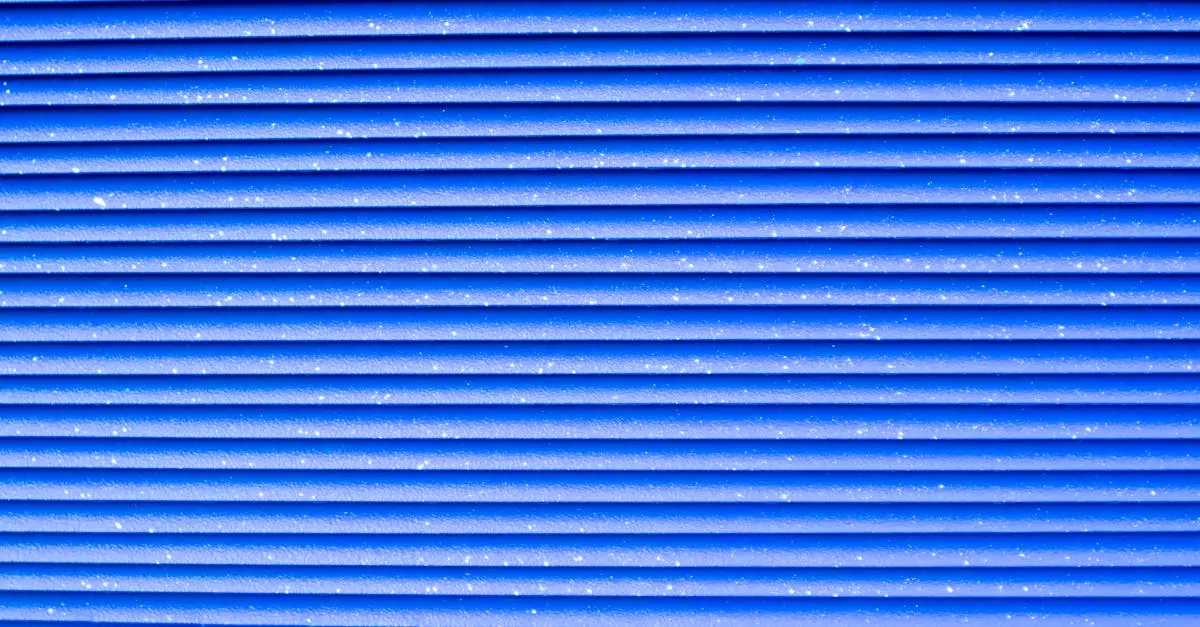When it comes to home entrances, the weather can be a real party crasher. Rain, snow, and wind don’t care about your beautiful welcome mat or that cute little potted plant. They’ll barge in uninvited, leaving your entryway a soggy mess. But fear not! Weatherproof entryways are the superheroes your home deserves, ready to fend off the elements and keep your space looking sharp.
Table of Contents
ToggleOverview of Weatherproof Entryways
Weatherproof entryways play a crucial role in protecting homes from harsh environmental conditions. By utilizing materials that resist moisture, wind, and temperature changes, these entryways maintain their integrity over time. Homeowners benefit from various design options, including overhangs, awnings, and robust door systems that enhance durability.
Effective insulation makes weatherproof entryways energy efficient, significantly reducing heating and cooling costs. Properly sealed entryways prevent drafts, keeping indoor temperatures consistent. Investing in high-quality weatherstripping and seals allows for improved energy performance, essential during extreme weather conditions.
Entryways equipped with storm doors offer additional protection against severe rain and strong winds. They act as a barrier, reducing the impact of outside elements on primary doors. Furthermore, materials like fiberglass and steel provide higher resilience compared to traditional wooden doors.
Research indicates that well-designed weatherproof entryways can extend the lifespan of doors and surrounding structures by decades. An effective drainage system helps redirect water away from the home’s foundation, preventing potential damage. Altogether, thoughtful planning ensures long-lasting functionality and aesthetics.
Incorporating features like recessed mats and non-slip surfaces contributes to safety, especially during winter months. Effective design not only keeps entryways clean but also improves accessibility. By taking these considerations into account, homeowners can create inviting, functional spaces that withstand the test of time and weather.
Benefits of Weatherproof Entryways
Weatherproof entryways offer numerous advantages for homeowners seeking to enhance their home’s resilience and efficiency against the elements. These features significantly improve the longevity and appeal of residential entrances.
Protection from Elements
Weatherproof entryways combat issues like moisture, wind, and temperature fluctuations. These structures utilize durable materials that resist wear from rain and snow. Effective design elements such as overhangs and storm doors provide additional shielding from harsh conditions. The right installation prevents water intrusion, which can cause significant damage over time. Owners benefit from peace of mind, knowing their entryways remain functional and inviting regardless of external weather challenges. Various design options enable personalization while prioritizing protection against the elements.
Energy Efficiency
Energy efficiency significantly improves with well-constructed weatherproof entryways. Insulation in these designs minimizes heat loss, leading to substantial savings on energy bills. Sealing gaps and cracks reduces drafts, enhancing interior comfort through stable temperatures. Enhanced energy performance contributes positively to the overall sustainability of the home. Furthermore, durable materials resist heat transfer more effectively than traditional options, resulting in better temperature regulation. Properly designed entryways thus support energy efficiency goals while decreasing reliance on heating and cooling systems.
Types of Weatherproof Entryways
Weatherproof entryways vary in materials and designs, ensuring robust protection against the elements while enhancing a home’s aesthetic appeal.
Materials Used
Fiberglass doors offer excellent resistance to moisture and temperature changes, making them a popular choice for weatherproof entryways. Steel provides added durability, often featuring a protective coating to prevent rust. Composite materials combine various substances, resulting in lightweight yet sturdy entry systems. Wood options, when treated properly, can also be effective against weathering, although they require regular maintenance to maintain their integrity. Each material brings specific advantages, allowing homeowners to choose based on their climate and design preferences.
Designs and Styles
Overhangs serve as effective shields against rain and snow, promoting a dry entry experience. Awnings enhance visual appeal while providing necessary protection from UV rays and moisture. Storm doors act as barriers, adding an extra layer against harsh weather while improving energy efficiency. Contemporary designs often focus on sleek lines and minimalism, while traditional styles incorporate ornate details. Homeowners can select from an array of designs to complement their architecture, ensuring functionality without sacrificing visual impact.
Installation Considerations
Installing a weatherproof entryway involves several important factors, from professional help to ongoing maintenance needs.
Professional vs. DIY
Deciding between professional installation and DIY can affect the outcome of a weatherproof entryway. Professionals offer expertise in selecting materials and ensuring proper construction, which often results in a better seal against the elements. Homeowners equipped with basic skills may successfully handle a DIY installation, particularly with pre-hung door systems. Local building codes might influence choices, so checking regulations is essential. Professional assistance often guarantees adherence to these standards, reducing the likelihood of errors. Challenges may arise during installation, making expert input worthwhile. Those who opt for DIY must plan thoroughly and consider potential risks.
Maintenance and Care
Maintaining a weatherproof entryway ensures its longevity and functionality. Regular inspections help identify signs of wear, such as peeling paint or damaged seals, before they lead to larger issues. Cleaning weatherproof materials effectively keeps them looking good and performing well. Homeowners should focus on removing dirt and debris from door frames and entry mats. Applying weatherstripping and caulk can enhance energy efficiency by preventing drafts. Seasonal assessments of entryways allow for timely repairs and any necessary upgrades. High-quality materials may require less maintenance, while wooden options typically need regular treatment. Prioritizing routine care contributes to a home’s overall resilience against environmental challenges.
Conclusion
Weatherproof entryways are essential for maintaining a home’s aesthetic and structural integrity against the elements. By investing in durable materials and thoughtful designs, homeowners can create inviting spaces that stand up to harsh weather conditions. The benefits extend beyond protection; these entryways enhance energy efficiency and reduce maintenance costs over time.
With options like fiberglass doors and storm doors, homeowners can find solutions tailored to their specific needs while ensuring safety and accessibility. Regular maintenance and proper installation are key to maximizing the lifespan and performance of these entryways. Embracing weatherproof entryways is a smart choice for anyone looking to enhance their home’s resilience and charm.








